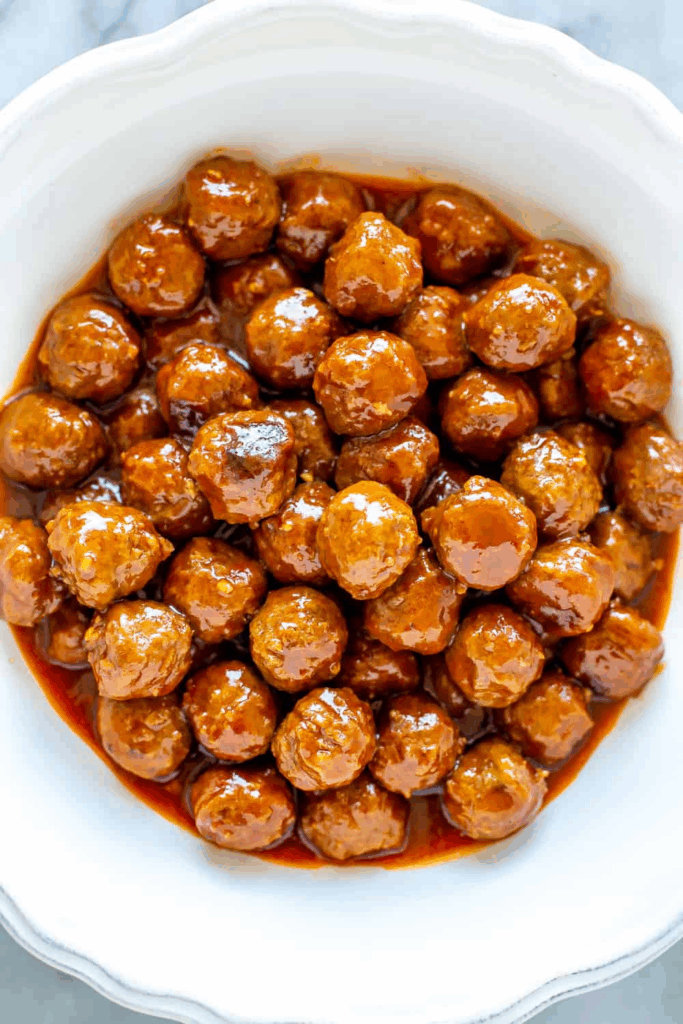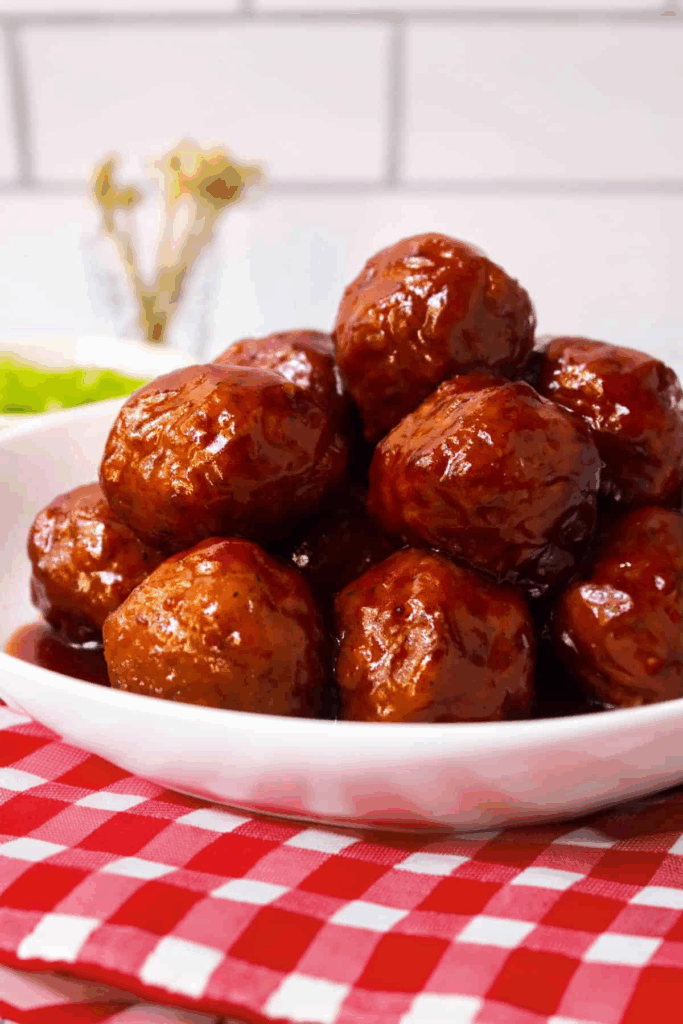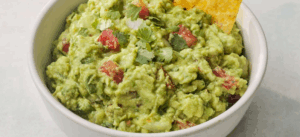How to Cook Frozen Meatballs
How to Cook Frozen Meatballs: Guide to Juicy, Flavorful Results from Any Method

Welcome from the Chef:
Frozen meatballs are one of my go-to ingredients for quick, satisfying meals. With the right techniques, they can taste just as rich and juicy as homemade. In this guide, I’ll teach you how to coax flavor, texture, and versatility out of frozen meatballs using real chef strategies.
- What Makes Frozen Meatballs Unique Compared to Fresh
- Choosing the Best Frozen Meatballs
- Do You Need to Thaw Frozen Meatballs?
- Ingredients and Tools You’ll Need
- Oven-Baked Frozen Meatballs: Even Cooking and Browning
- Skillet Method: For Quick Crust and Flavorful Finish
- Cooking Frozen Meatballs in the Air Fryer
- Slow Cooker Method: Low and Slow Flavor Infusion
- Microwave Method: Convenience with a Tradeoff
- Pressure Cooker or Instant Pot Meatballs
- Time and Temperature Chart by Method
- Best Sauces for Frozen Meatballs
- Seasonings and Aromatics That Complement Frozen Meatballs
- Common Mistakes and How to Avoid Them
- Creative Variations and Serving Ideas
- How to Store and Reheat Cooked Frozen Meatballs
- FAQ: 15 Real Questions About Cooking Frozen Meatballs — Answered by a Chef

What Makes Frozen Meatballs Unique Compared to Fresh
Frozen meatballs offer remarkable convenience, but they come with their own characteristics that every cook must understand. Unlike fresh meatballs, which you shape and season yourself, frozen varieties are pre-cooked or par-cooked, flash frozen, and sometimes coated in a protective glaze or sauce base. That changes how they respond to heat and moisture.
Texture and fat content
Most frozen meatballs contain a higher fat ratio than fresh recipes, which helps prevent them from drying out during storage and reheating. The texture tends to be denser and more uniform, which means they’re more forgiving under heat. However, the trade-off is that they don’t absorb sauces as deeply as fresh, tender meatballs unless you simmer them for a long time.
How freezing affects moisture and flavor
Flash freezing locks in moisture, but reheating too quickly or without liquid can result in a rubbery exterior. I always account for surface dehydration and internal moisture loss by using indirect heat or liquid-based cooking methods like baking with sauce or simmering in broth. This helps rehydrate the proteins and restore mouthfeel.
Choosing the Best Frozen Meatballs
There’s a huge difference between mediocre frozen meatballs and great ones—and it all starts with reading the label and knowing your flavor goals. I always treat frozen meatballs like a blank canvas, which means I want quality, not just convenience.
Meat types and ingredients to look for
The best frozen meatballs contain beef, pork, veal, or turkey with minimal fillers and no textured soy protein. I check the first three ingredients—if water or breadcrumbs top the list, it’s usually not a good sign. I prefer varieties with 10–18g of protein per serving and a moderate fat content (about 10–12g per 100g). That’s the range where texture and flavor hold up across all cooking methods.
Flavor profiles and when to go unseasoned
If I’m planning to use bold sauces like BBQ, teriyaki, or coconut curry, I choose unseasoned or lightly seasoned meatballs. This prevents conflicting spices. If I’m making classic Italian or Swedish dishes, I opt for pre-seasoned varieties with garlic, onion, and herbs already in the mix. I’ve also used lamb-based and chicken meatballs for Greek or Asian recipes respectively, but those need extra sauce support to avoid dryness.
Do You Need to Thaw Frozen Meatballs?
This is one of the most common questions I get—and the answer is: usually not. Most frozen meatballs are designed to be cooked directly from frozen, and doing so often leads to better moisture retention.
When to cook from frozen vs thawed
I cook from frozen when baking, simmering in sauce, or using a slow cooker. The gradual heat helps rehydrate the interior and allows the sauce to work its way into the meatball. However, for methods like pan-searing or air frying, I sometimes thaw them slightly to ensure even browning and reduce the risk of burning the outside before the inside is hot.
Safety and USDA guidelines
According to USDA food safety guidelines, frozen meatballs can be cooked without thawing as long as they reach an internal temperature of 165°F (74°C). I use a digital thermometer inserted into the center of the largest meatball in the batch—this guarantees I’m serving a safe, fully cooked product without guesswork.

Ingredients and Tools You’ll Need
Here’s what I always keep within reach when cooking frozen meatballs to guarantee flavor, safety, and texture:
Ingredients:
- Frozen meatballs (beef, pork, turkey, lamb, or chicken)
- Oil (olive oil, avocado oil, or neutral cooking oil)
- Onion, garlic, and aromatics (optional for sauce or skillet)
- Your chosen sauce (marinara, cream, BBQ, teriyaki, etc.)
- Broth or water (for simmering or pressure cooking)
- Fresh herbs (parsley, basil, dill, thyme)
- Acid (lemon juice, vinegar) for balance
- Cheese (Parmesan, mozzarella, feta depending on cuisine)
Tools:
- Skillet or sauté pan (non-stick or stainless steel)
- Sheet pan (for baking or roasting)
- Parchment paper or foil
- Tongs and spatula
- Meat thermometer (essential for safety)
- Pressure cooker, slow cooker, or air fryer (optional)
- Microwave-safe container with a lid (for fast reheats)

Oven-Baked Frozen Meatballs: Even Cooking and Browning
The oven is one of the most reliable and effective ways to cook frozen meatballs, especially when you want an evenly heated interior and the option for browning. I often use this method when making meatballs for pasta, subs, or party trays.
Roasting with or without sauce
When roasting without sauce, I place frozen meatballs on a rimmed baking sheet lined with parchment paper or foil. I leave space between each one to allow for air circulation, which promotes browning. I roast at 400°F (200°C) for 20–25 minutes, turning once halfway through for even color.
When baking with sauce, I nestle the frozen meatballs in a layer of marinara, gravy, or cream-based sauce in a casserole dish. I cover it with foil for the first 15 minutes, then uncover to finish at 375°F (190°C) until bubbling and hot, about 30 minutes total.
Timing and internal temperature targets
Oven baking from frozen takes a little longer, but it ensures consistent doneness. I always check the internal temperature with a digital probe. When the center reaches 165°F (74°C), they’re done. If using large meatballs (2 oz or more), I sometimes extend cooking to 30–35 minutes.
Skillet Method: For Quick Crust and Flavorful Finish
Skillet cooking is perfect for frozen meatballs when you want fast browning and bold, pan-roasted flavor. It also allows you to infuse them with aromatics in real time.
Searing frozen vs thawed
If cooking from frozen, I start by covering the pan and steaming them with a small amount of water or broth for 5–7 minutes. Once thawed, I remove the lid, drain any excess liquid, add oil, and brown the meatballs over medium-high heat for another 5–6 minutes. If I have time, I prefer thawing first in the fridge for more even browning and control.
When thawed, I can brown the exterior first, then reduce the heat and cover for even internal heating.
Simmering in sauce
Once browned, I often pour in a prepared sauce—tomato-based, creamy, or Asian-style—and reduce the heat to low or medium-low. I simmer uncovered for 10–12 minutes, stirring gently to coat evenly and thicken the sauce. This method lets the sauce soak into the meatballs and creates a luscious glaze.

Cooking Frozen Meatballs in the Air Fryer
Air frying gives frozen meatballs a wonderfully crisp exterior with a moist center—if you control spacing and time. I use this when I want texture without extra oil or sauces.
Best timing and spacing
I preheat the air fryer to 375°F (190°C), then lay the meatballs in a single layer with at least ½ inch space between them. Overcrowding leads to steaming. I cook for 10–13 minutes, shaking the basket at the halfway point. Small meatballs (under 1 oz) take closer to 8–10 minutes, while larger ones go to 14–15.
Avoiding dry texture
Air fryers can dry meatballs quickly, especially lean turkey or chicken versions. I avoid cooking them longer than needed. If I’m not serving them immediately, I toss them in a warm sauce or brush with a light glaze to reintroduce moisture. You can also finish them with a quick 1-minute broil or pan toss in sauce to balance the texture.
Slow Cooker Method: Low and Slow Flavor Infusion
The slow cooker is ideal for building flavor slowly while keeping meatballs moist and tender. I use this method for large batches, potlucks, or make-ahead dinners where timing flexibility is essential.
Sauce options and layering
I always place some sauce at the bottom of the slow cooker, then add the frozen meatballs, layering more sauce on top to ensure full coverage. Whether I’m using marinara, barbecue, cranberry-chili, Swedish cream, or even coconut curry, I make sure there’s enough liquid to surround and soften the meatballs throughout the cook.
Cooking time and heat settings
For fully frozen meatballs, I cook on LOW for 4–6 hours or HIGH for 2.5–3 hours. I avoid opening the lid during cooking to retain heat and avoid temperature drops. Once done, I stir gently to coat and serve directly from the cooker. If I’m using pre-cooked meatballs, there’s no need to worry about browning—they’ll soak up flavor perfectly with time.

Microwave Method: Convenience with a Tradeoff
Microwaving frozen meatballs is the fastest method, but it’s also the easiest one to mess up. The key is balancing speed with moisture retention. I only use this method when I need a quick meal or am reheating leftovers—not when flavor or presentation are critical.
How to keep meatballs moist
I place the frozen meatballs in a microwave-safe dish, add 1–2 tablespoons of water, broth, or sauce, and cover the dish loosely with a lid or microwave-safe plate. This traps steam and prevents the meatballs from drying out or toughening. I microwave on 50–70% power to heat evenly. Full power often scorches the outside while the inside remains frozen.
I cook in 1-minute intervals, checking after each cycle. Depending on size and quantity, total time is 4–6 minutes. After microwaving, I let them rest for 1–2 minutes to allow heat to redistribute. Then I toss with sauce or garnish and serve immediately.
Power level and timing tips
For small batches (4–6 meatballs), I use 70% power for 3–4 minutes. For larger portions (10–12), I reduce to 50–60% power and extend to 6–8 minutes, stirring or rotating halfway. Never leave meatballs uncovered in the microwave—they’ll lose moisture instantly and come out rubbery.
Pressure Cooker or Instant Pot Meatballs
Pressure cooking is a game changer for frozen meatballs. In less than 15 minutes, I can go from frozen to tender, sauce-coated meatballs—all without drying or overcooking. This is my method of choice when I want quick flavor infusion with minimal effort.
From frozen to fork-tender
I place the frozen meatballs into the pressure cooker insert and cover them with sauce—usually marinara, BBQ, or a seasoned broth. I seal the lid and cook on high pressure for 6–8 minutes, depending on the size. After that, I perform a quick release and stir gently.
This method ensures that the meatballs are not just hot inside but also infused with the surrounding flavors. If I want extra depth, I reduce the sauce for a few minutes using the sauté function after pressure cooking is complete.
Pairing with sauce and cook times
I always use enough sauce to at least half-submerge the meatballs. Less than that, and the pressure cooker may struggle to generate steam. If I’m cooking a large batch (2–3 lbs), I add ½ cup water or broth to thin thick sauces and prevent the burn warning. I never exceed 10 minutes at pressure—beyond that, meatballs begin to fall apart.
Time and Temperature Chart by Method
This is the exact chart I rely on for perfect frozen meatballs, adjusted by method and average meatball size (about 1.5 oz):
| Method | Temperature / Setting | Time Range | Internal Temp Goal |
| Oven | 375–400°F (190–200°C) | 20–30 min | 165°F (74°C) |
| Skillet | Medium heat | 12–15 min total | 165°F (74°C) |
| Air Fryer | 375°F (190°C) | 10–13 min | 165°F (74°C) |
| Slow Cooker | HIGH / LOW | 2.5–3h / 4–6h | 165°F (74°C) |
| Microwave | 50–70% power | 4–6 min | 165°F (74°C) |
| Pressure Cooker | High Pressure | 6–8 min + release | 165°F (74°C) |
No matter the method, I always check doneness with a probe thermometer inserted into the center of the thickest meatball.
Best Sauces for Frozen Meatballs
The sauce isn’t just an accessory—it transforms the entire experience. A good sauce brings moisture, flavor layering, and cohesion to your dish. I always pair sauces with the type of meatball and the cooking method I’m using.
Marinara, BBQ, gravy, teriyaki, creamy options
Marinara is the classic. I simmer meatballs in a garlicky, slow-cooked tomato sauce for 20–30 minutes, allowing the acid and umami to penetrate the outer crust. I use this base when baking in pasta casseroles, stuffing hoagies, or topping with mozzarella for meatball parmesan.
Barbecue sauce pairs well with beef or pork meatballs. I prefer a thick, smoky sauce with brown sugar and a hint of vinegar. I’ve slow-cooked these in a Crock-Pot at events—they never last long.
Brown gravy or mushroom sauce turns meatballs into comfort food. When I go this route, I simmer in a pan with onions, butter, and beef stock thickened with flour. Perfect over mashed potatoes or egg noodles.
Teriyaki works especially well with chicken meatballs. I create a glaze using soy sauce, mirin, garlic, ginger, and honey, then reduce until sticky. It gives the meatballs a lacquered finish.
Creamy sauces, like Swedish cream sauce or Dijon mustard cream, complement pork or turkey. I make them using heavy cream, beef broth, nutmeg, and white pepper, whisked to silkiness. I always add the meatballs at the end to preserve the sauce’s texture.
When to add sauce based on method
- Oven or slow cooker: add the sauce before cooking, especially when using tomato or cream bases.
- Skillet: brown meatballs first, then add sauce to simmer and coat.
- Pressure cooker: use thinner sauces to avoid “burn” error and reduce after cooking.
- Air fryer: toss or glaze after cooking; sauces go on last to preserve the crust.
- Microwave: add a small amount of sauce during reheating to retain moisture.
Seasonings and Aromatics That Complement Frozen Meatballs
Seasonings elevate frozen meatballs beyond their base factory profile. Whether you’re enhancing a sauce or building layers into the cooking oil, the right choices make all the difference.
Garlic, onion, herbs, chili, spice blends
I always begin with aromatics. Sautéed garlic and onion in olive oil create a flavorful base for any sauce. I use rosemary and oregano for Italian, thyme and nutmeg for Swedish, cumin and coriander for Middle Eastern, and ginger and scallions for Asian glazes.
For heat, I go with crushed red pepper, Aleppo pepper, or chili paste, depending on the cuisine. A little goes a long way, and I always bloom spices in oil to activate them before adding sauce or meatballs.
When to build flavor vs finish it
I build flavor early when using slow methods like Crock-Pot or oven-baked casseroles. For fast cooking (air fryer or microwave), I finish with fresh herbs, citrus zest, infused oils, or cheese like grated Parmesan or crumbled feta. That last-minute addition wakes everything up and adds a personal chef’s touch.
Common Mistakes and How to Avoid Them
Over years in kitchens, I’ve seen the same frozen meatball mistakes again and again. Fixing them is easy—if you know what to watch for.
Overcooking, overcrowding, watery sauces
Overcooking happens in the oven and air fryer most often. If the meatballs are already fully cooked (and most are), your job is to reheat, not “cook.” I remove them as soon as they hit 165°F, not when they look brown.
Overcrowding ruins texture and creates steam. I never cram meatballs into a skillet or air fryer basket—leave room between each one. Cook in batches if needed.
Watery sauces occur when you add sauce too early or don’t reduce it. I simmer tomato sauces until thickened before adding meatballs. Cream sauces should be added late and gently simmered to avoid breaking.
Bland flavor and soggy texture
Using frozen meatballs without supporting flavors leads to bland results. I always start with aromatics and finish with herbs or cheese. Soggy meatballs come from too much liquid, over-simmering, or microwaving without cover. I keep sauce amounts balanced and reheating times short to preserve structure.
Creative Variations and Serving Ideas
Frozen meatballs are more versatile than people think. I’ve served them in casual lunches and upscale dinner events—what matters is the creativity of preparation.
Meatball subs, pasta, rice bowls, skewers, sliders
Meatball subs: I toast hoagie rolls, add marinara-simmered meatballs, layer with provolone or mozzarella, and broil until bubbly. Finish with fresh basil.
Pasta dishes: I toss meatballs and pasta in thick tomato sauce, then bake with a dusting of Pecorino Romano for a crispy top.
Rice bowls: I serve glazed meatballs (teriyaki or gochujang) over jasmine rice with roasted vegetables and quick pickles.
Skewers: I alternate meatballs with bell peppers or pineapple, then grill and brush with a sweet-savory glaze. Great for appetizers.
Sliders: I pair meatballs with arugula, garlic aioli, or a chipotle mayo on toasted mini brioche buns. Guests love the mini format.
Global styles—Italian, Swedish, Korean, Middle Eastern
- Italian: marinara, herbs, grated Parmesan, and garlic bread
- Swedish: creamy gravy with nutmeg, served with mashed potatoes or lingonberry jam
- Korean: soy-ginger glaze, sesame seeds, scallions, and sticky rice
- Middle Eastern: tahini sauce, za’atar, and warm pita or couscous
How to Store and Reheat Cooked Frozen Meatballs
Storing leftovers correctly keeps them tasting great for days. I treat them like any high-protein dish—moisture retention is key.
Fridge and freezer tips
In the fridge, I keep meatballs submerged in their sauce in a sealed container. They last for 3–4 days. Without sauce, they dry out faster. I never leave them uncovered, even briefly.
For freezing, I flash-freeze individual meatballs on a tray, then store in freezer bags or airtight containers. I label with date and sauce type. Frozen, they last up to 3 months.
If I freeze meatballs already in sauce, I defrost slowly in the fridge overnight and gently reheat to avoid breaking the structure.
Best methods to reheat without drying out
I reheat on the stovetop in a covered skillet with a splash of broth or sauce. For oven reheating, I cover with foil and warm at 300°F (150°C) for 20 minutes.
Microwaving works too—just use 50–70% power, cover the dish, and stir midway. I avoid microwaving them dry. I always finish reheated meatballs with a fresh garnish: herbs, citrus zest, or cheese.
FAQ: 15 Real Questions About Cooking Frozen Meatballs — Answered by a Chef
Do I need to thaw frozen meatballs before cooking?
No, I almost always cook them straight from frozen. It saves time and helps retain moisture inside. The only time I partially thaw is when I need to brown them evenly in a skillet or air fryer.
How long do frozen meatballs take to cook in the oven?
I bake them at 400°F (200°C) for 20–25 minutes, turning once. Larger meatballs or batches with sauce can take up to 30–35 minutes. I always check for 165°F (74°C) internal temperature before serving.
What’s the best sauce to pair with frozen meatballs?
That depends on your flavor goal. I use marinara for Italian, BBQ for smoky dishes, Swedish cream sauce for comfort food, and teriyaki for an Asian twist. I’ve also made coconut curry meatballs with fantastic results.
Can I air fry frozen meatballs without drying them out?
Yes, if you space them properly and don’t overcook. I recommend 375°F (190°C) for 10–13 minutes. After cooking, I often toss them in warm sauce to reintroduce moisture.
Are frozen meatballs already cooked?
Most store-bought frozen meatballs are fully cooked, but always check the label. If they’re raw, you must cook them to at least 165°F. I still treat them as raw in terms of food safety until verified.
Can I put frozen meatballs in the slow cooker without browning?
Yes. I layer them with sauce and cook on LOW for 4–6 hours or HIGH for 2.5–3 hours. They come out juicy and flavorful, especially when left undisturbed until the end.
What’s the best way to reheat cooked frozen meatballs?
I reheat them in a covered skillet with a splash of sauce or broth over low heat. For oven reheating, I use foil at 300°F. In a microwave, I use 50–70% power to avoid drying.
Can I add frozen meatballs directly to soup or stew?
Absolutely. I drop them into hot broth during the last 10–15 minutes of cooking. They pick up flavor from the liquid and help bulk up the dish.
How do I make frozen meatballs taste homemade?
I start with aromatics like garlic and onion, use fresh herbs or citrus zest, and finish with grated cheese or a flavored oil. These small touches elevate the entire dish.
Can I cook frozen meatballs in the microwave?
Yes, but use lower power settings and cover them with a lid or wrap. I add a bit of water or sauce and heat in short bursts until evenly warmed through.
How do I prevent meatballs from becoming soggy in sauce?
I reduce the sauce first, then simmer gently. If cooking in the oven or slow cooker, I avoid drowning them—just enough sauce to cover or coat works best.
Are there vegetarian or plant-based frozen meatballs?
Yes, and many cook the same way as meat-based versions. I treat them gently, especially in dry heat methods. I often finish them with a bold sauce or glaze.
Can I mix frozen meatballs with pasta while baking?
Definitely. I partially bake the meatballs, then layer them with pasta, sauce, and cheese. Covered baking at 375°F for 25–30 minutes results in a hearty one-pan meal.
Should I cover frozen meatballs when baking?
If baking in sauce, yes—at least for the first half to retain moisture. For dry-roasting or air frying, I keep them uncovered to encourage browning.
How do I serve frozen meatballs at a party?
I keep them warm in a slow cooker with sauce, serve them on skewers with glaze, or set up mini buns and toppings for DIY sliders. I’ve done this dozens of times—easy, satisfying, and mess-free.





Post Comment